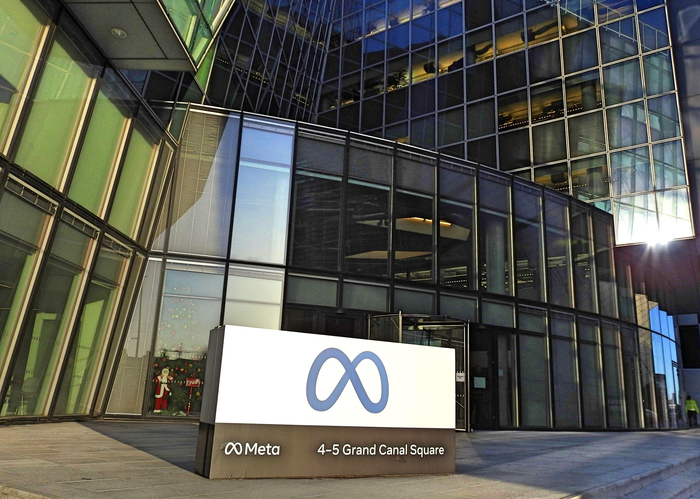Clarifying Anti-Retaliation Protections Under Dodd-Frank

By Stephen Kohn
June 22, 2017
What protections are available under the Dodd-Frank Act’s (DFA) whistleblower law if an employee reports securities fraud within the company? Although it may seem logical to protect employees who report violations to their supervisors or compliance departments, the U.S. courts are deeply divided on this issue. Courts have pointed to two separate definitions of a “whistleblower” in the DFA to justify their differing positions. However, a more careful review of the history of the DFA should resolve this prolonged dispute.
It started in Texas where the Fifth Circuit became the first court to decide whether an employee who disclosed securities violations internally to a corporate ombudsman was protected from retaliation under the DFA. In Asadi v. G.E. Energy the Fifth Circuit dismissed the employee’s lawsuit, holding that the employee’s internal complaints were not protected. The court reasoned that only contacts with the U.S. Securities and Exchange Commission were protected. Reporting violations internally was not enough: “the Dodd-Frank whistleblower-protection provision creates a private cause of action only for individuals who provide information relating to a violation of the securities laws to the SEC.”[1]
The position General Electric took before the appeals court is counterintuitive. Why would a company argue against the best interests of its own corporate compliance program? Why would any company promote a legal interpretation that would discourage its own employees from working within the company to resolve issues? These issues were not lost on the SEC, which was trying to promote effective internal compliance programs. After the Fifth Circuit’s ruling the SEC commenced filing amicus curie briefs whenever this issue was raised before an appeals court. From 2014 to 2017 they strongly argued that internal whistleblowing was protected before the Second, Third, Sixth, Seventh, Eighth, Ninth and Eleventh Circuits.[2]
The next appeals court to substantively address the issue was the Second Circuit. A divided Second Circuit panel rejected the Fifth Circuit’s ruling and held that internal reporting was protected. The court recognized the circuit split, but nonetheless held that an employee is “entitled to pursue Dodd-Frank remedies for alleged retaliation after his report of wrongdoing to his employer, despite not having reported to the Commission before his termination.”[3]
In May of 2017 the Ninth Circuit became the most recent appeals court to weigh in on the issue. In another 2-1 split decision, that court sided with the Second Circuit.[4] Scores of district courts have also weighed in on this issue, with differing results. Until the dispute is resolved by the U.S. Supreme Court, employees who fail to file claims with the SEC are at risk of losing their DFA retaliation cases.
This dispute has real impact. The DFA’s anti-retaliation protections permits employees to file their claims directly in federal court, mandates double damages for lost wages, and has a six-year statute of limitations. These provisions are enhancements on the older corporate whistleblower law, the Sarbanes-Oxley Act, which has a 180-day limitations period, mandates that cases be initially filed with the U.S. Department of Labor, and does not permit double back pay.[5]
The legal dispute focuses on the definition of “whistleblower.” In one part of the DFA a “whistleblower” is defined as an “individual” who files information with the SEC.[6] This definition would appear to require filing with the SEC to be covered under the DFA. But there is also a specific definition of protected disclosures under the act, which is far broader, and includes internal complaints. The meaning of this second definition is at the root of the judicial dispute.
This second definition is codified as Section 21F(h), subdivision (iii), and is generally simply referred to as “subdivision (iii)” of the DFA. Subdivision (iii) states that any disclosure protected under the SOX anti-retaliation protections law is also a protected disclosure under the DFA. The SOX law explicitly protects employees who make internal reports within a company, including to their supervisors or compliance programs.[7] Consequently, the SEC and the Second and Ninth Circuits have relied on subdivision (iii) to conclude that internal whistleblowing is protected. The Fifth Circuit relied on the initial definition of “whistleblower” to determine that contact with the SEC was required.
Subdivision (iii) was added to the DFA at the very end of the legislative process, and has no publicly reported history. The Second Circuit carefully traced each step Congress took in drafting the DFA, and lamented the mysterious nature of how subdivision (iii) came to be. The court explained that “normally” it would “look to the legislative history” to “learn what Congress, or the relevant committee, had sought to accomplish by adding” the provision. But, per the Second Circuit, the published legislative history “yields nothing.”
When both the House and Senate voted on their respective versions of the DFA, neither of these branches of Congress approved the language contained in subdivision (iii). None of the recommendations or drafts submitted by the president contained any reference to the language in subdivision (iii). As explained by the Second Circuit: “The House version of section 21F included subsection 21F(g)(1)(A), which prohibited retaliation against an employee for ‘providing information to the Commission’” and “defined ‘whistleblower’ as one or more individuals ‘who submit information to the Commission.’” There was no mention of internal reporting. The same was true for the version approved by the Senate, which simply “copied the definition of ‘whistleblower’ from the House version.”
After the House and Senate passed their versions of the DFA, the bill went into a conference for reconciliation. During the conference, there was “no mention of the addition of subdivision (iii), much less its meaning or intended purpose.” Also, subdivision (iii) was not mentioned in the final conference report nor in the final passage debates on Dodd-Frank. Subdivision (iii) was approved in the final version of the law voted on by Congress, with no debate, no controversy and no opposition in either the Senate or the House of Representatives.
Looking at this vacant legislative record, the Second Circuit concluded: “no one seems to know whence it came.”
From Whence It Came
Although not part of the official congressional history, the process which resulted in passage of subdivision (iii) is very straightforward. After the House passed its version of the whistleblower provision and just days before the Senate approved its initial version of the bill, the staff of the Senate Banking Committee reached out to the National Whistleblower Center (NWC), a nonprofit organization assisting whistleblowers since 1988 [and for which the author of this article serves as executive director]. The committee wanted to ensure that the final whistleblower provisions, which would soon be discussed in conference, would fully protect whistleblowers. On April 23, 2010, staff from the Senate Banking Committee requested an opinion from the NWC concerning the wording of the law. The Senate Banking Committee staff wanted to make doubly sure that the final version of the whistleblower law would actually work.[8]
Subdivision (iii) was recommended to the committee in an email dated April 24, 2010. In that email, the NWC’s executive director briefly explained the need for subdivision (iii): “I have reviewed some of the legal precedents under corporate whistleblower laws, and believe that the definition of protected activity I provided to you yesterday needs to be expanded to include two types of disclosures that have fallen through the cracks.” Internal reporting was at risk of falling through one of these “cracks.”
In its April 24 email the NWC proposed a “new subsection (iii)” to the final bill, which stated: ”Making disclosures that are required, authorized or protected under the Sarbanes Oxley Act of 2002 (including, but not limited to, sections 301 and 1107 of that Act), the Securities Exchange Act of 1934 or any other law, rule or regulation subject to jurisdiction of the Securities and Exchange Commission.”[9]
Nearly word-for-word, the proposed “new subsection (iii)” made its way into the final version of the bill approved in conference. By making the recommended change, the conference clearly agreed with the NWC’s concern that potential “loophole[s]” “need[ed] to be fixed.”
The concern over how valid whistleblowers could “fall through the cracks” did not arise in a historic vacuum. The most significant prior ruling on this issue was Phillips v. Interior Board, a 1971 case under the Mine Health and Safety Act. The D.C. Circuit was asked to determine whether a report to a supervisor was protected, even though the statutory definition of a protected disclosure appeared to cover only reports to the government. In a 2-1 decision, the D.C. Circuit fully protected internal disclosures, reasoning that internal reporting was an “essential preliminary stage” to what could become a report to the government. Excluding “preliminary” internal reports from coverage would make protection under the law a “hollow promise.” Protecting preliminary reports was necessary to ensure “realistically effective” compliance with the law.[10]
In 1977 Congress amended the mine safety law, and in the process explicitly ratified the D.C. Circuit’s opinion. In the conference report discussing the 1977 amendments, Congress made clear that its initial intent in enacting the miner’s law was to cover internal reporting. The 1977 amendment simply clarified that the original intent behind the law was consistent with Phillips.[11] Thereafter, other laws which were narrowly construed to cover only reports to the government were amended to clarify that internal reports were protected.[12] It is now commonplace for Congress to explicitly cover internal reporting when enacting new whistleblower laws.[13]
The NWC was fully aware of these earlier “legal precedents under corporate whistleblower laws,” and proposed the inclusion of subdivision (iii) in hopes of avoiding the old disputes over whether internal reporting was protected. Given Congress’ long-standing intent to ensure the protection of internal whistleblowers it is not surprising that the language on the DFA was approved in conference, without controversy.
Published in Law360: https://www.law360.com/employment/articles/936265/clarifying-anti-retaliation-protections-under-dodd-frank




